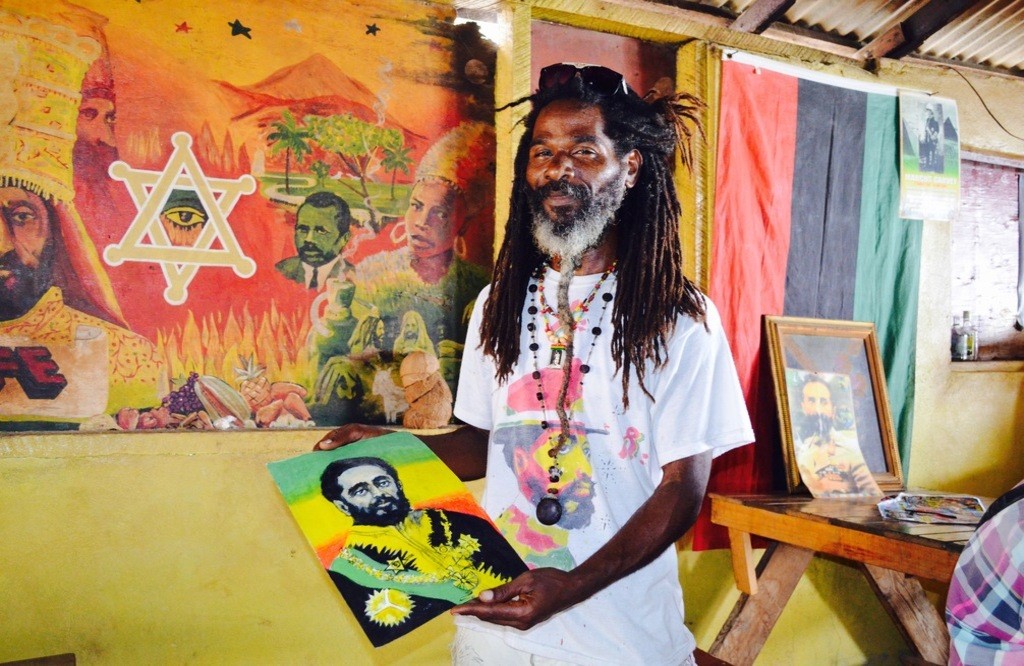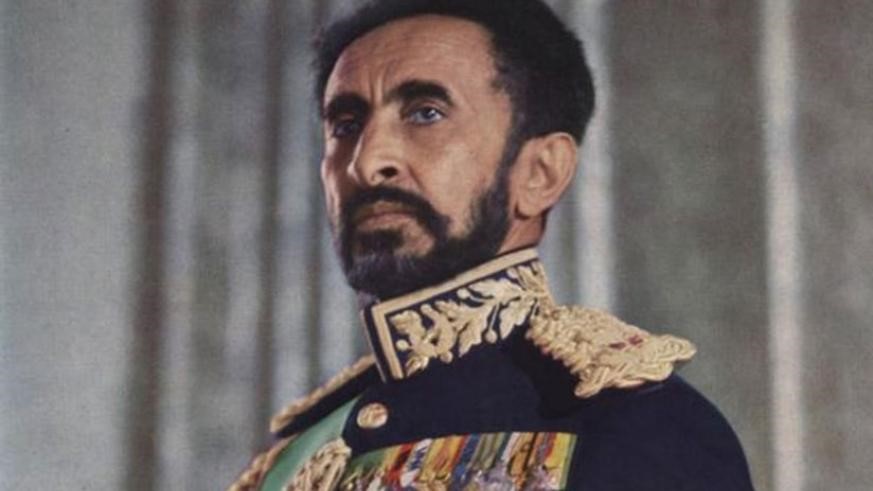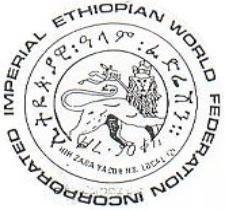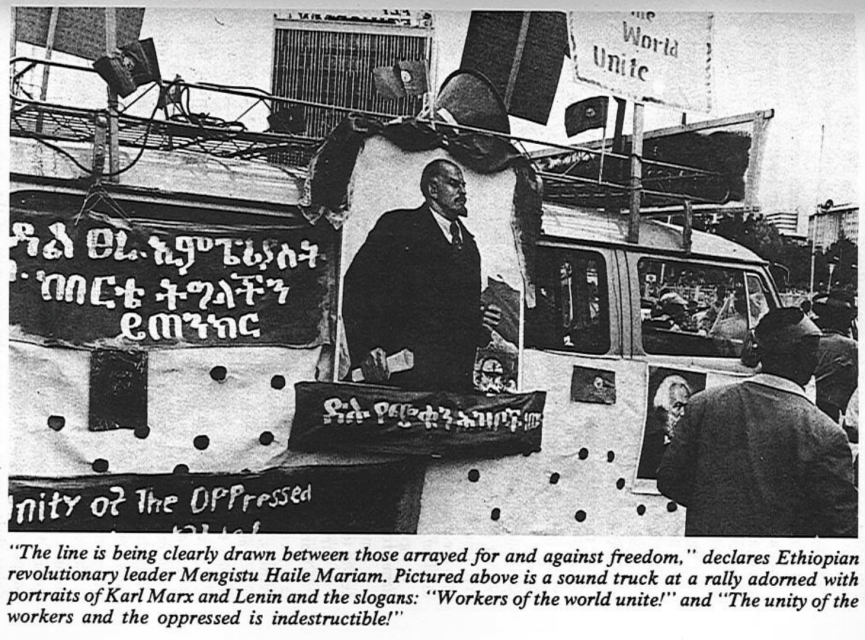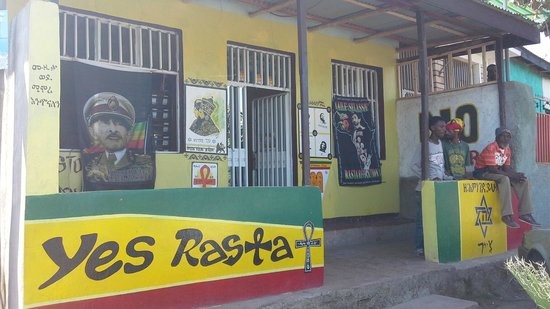Most people generally understand the idea of Israel as a ‘promised land.’ Whether you agree with it or not, the Hebrew tradition dictates that a vast tract of land was given to Abraham by God and that when the Israelites settled and created a kingdom upon part of this land, it was a fulfillment of the promise. Thus, Israel derives its supposed legitimacy from God and this historical kingdom. Now, what does this have to do with Shashamane, a town in Ethiopia which doesn’t exactly have many Jewish people in it? Well, this is not the only promised land, and Judaism isn’t the only religion to have this concept.
Shashamane’s Origin: Rastafarianism
So, Rastafarianism. The word probably conjures images of Bob Marley, dreadlocks and a white dickhead imitating Jamaican patois and pretending to smoke a doobie. It’s a religion so thoroughly linked in with music, fashion and drug culture that many people don’t even realise it is a religion. Truth be told, it’s a rather recent one, having only come about in the 1930s and being mainly concentrated on the island of Jamaica.
Rastafarianism is an Abrahamic belief for the most part, with some very specific regional interpretation, the bulk of which we won’t go into just now. Key to understanding Rastafarianism is the concept of ‘Jah.’ You almost certainly know the word whether you realise it or not. ‘Hallelujah’ is a common celebratory phrase in the western world, especially in Abrahamic faiths. The term is a transliteration of a Hebrew phrase meaning ‘praise God,’ with ‘Jah’ being the shortened form of Jahweh, meaning God. The shortening makes a lot more sense in the native tongue.
But anyway, Jah means God, sure, real insightful, right? God is important to an Abrahamic religion, who’da thought. Here’s the thing though, Rastafarians see this in a different way to other Abrahamic faiths. ‘Jah’ is thought to reside within all people as a small piece, not itself that uncommon in some circles. Jesus of course is believed to have been the physical representation of Jah as a whole manifested on Earth, the summation of the Godliness within every person and thus both God and man… Alright, still not too odd. What else sets it apart? Well, Rastafarianism believes that a second man encompasses Jah, thereby essentially being the second coming of Christ. Who could that be?
Emperor Haile Selassie I
You see, it does get a little odd. At least by our standards, that is, after all, every ancient prophet was at one point modern! Imagine the Christians of the first century, wondering if their parents or grandparents may have seen the man himself at the sermon on the mount! Anyway, Haile Selassie I was the emperor of Ethiopia between 1930 and 1974, his pre-imperial name Ras forming the root of Rastafarianism as a word. It seems… Random. But there’s always a reason for things like this, so what is it?
The roots of this initial conception may come from Marcus Garvey, a Jamaican black nationalist and pan-Africanist who allegedly stated to his followers, “Look to Africa for the crowning of a Black King; he shall be the Redeemer” which came not long before the coronation of Haile Selassie. His full title upon coronation was “Conquering Lion of the Tribe of Judah and King of Kings of Ethiopia and Elect of God,” which certainly must have played into the idea. Hell, Psalms 68:31 states, “…Ethiopia shall stretch forth her hands unto God,” But by far the most telling factor is the supposed origin of the Ethiopian royal family.
You see, tradition claims that Haile Selassie and his family are descended from Solomon and Sheba. This being Solomon, the King of Israel nearly 3000 years ago, following on from his father David, of Goliath-killing fame. Sheba, meanwhile, is a figure mentioned in the Hebrew Bible as an African queen who bestowed a caravan of gifts upon Solomon. She is alleged to have been Ethiopian and, more importantly, is said to have had children with Solomon giving credit to the idea of an African king being descended from the rulers of ancient Israel. Hence the many references to Zion in Rastafari inspired music. To them, Selassie has a genuine claim to the throne of Israel and being closely in communion with God.
By now, I’m sure you’re fed up, though. The fuck does this have to do with Shashamane? Y’know, the entire point of this whole article. Well, the weird thing about being considered a literal God in your own lifetime and having the political authority to make big decisions is you can actually answer the prayers of your flock. That’s exactly what Haile Selassie did.
Founding of Shashamane
In 1935, Ethiopia was invaded by Italy in another brutal attempt to subjugate Africa to western colonialism. The Ethiopians fought bravely but required help, sending out a call which resulted in the founding of the Ethiopian World Federation in 1937. This movement sought to consolidate beliefs in an African identity among the diaspora, particularly in America, but perhaps not coincidentally, the first branch of the movement outside of the US was in Kingston, Jamaica. For aid they provided to Ethiopia in its time of need, they were rewarded by Emperor Selassie in 1948. 200 hectares of land was given to the African diaspora as a whole, allowing those that wished to pack their bags and head to Ethiopia with land set aside for them to set up a community.
The largely symbolic act initially saw most attention from African-Americans, likely also enticed by Marcus Garvey’s ‘back to Africa’ movement, though Jamaican interest began to ramp up too. The fledgling Rastafari movement couldn’t help but see the parallels. They, without homes, strangers in their own countries as slaves (or descendants of slaves), much like the Israelites, now had a leader chosen by God who had given to them a promised land in the place of their birth. It was Zion for them.
Excitement built in 1961, when a delegation from Jamaica of both Rastafari and other figures met with Haile Selassie, asking about the possibility of the repatriation of Afro-Jamaicans to Ethiopia. His response was enthusiastic, stating, “Tell the Brethren to be not dismayed, I personally will give my assistance in the matter of repatriation.” Migration to Ethiopia steadily increased, albeit sharply limited by the difficulty of traveling such long distances at that time, especially from countries as mutually poor as Jamaica and Ethiopia. For a great many, it wasn’t practical.
On the 21st of April 1966, interest flared when Haile Selassie himself made a visit to Jamaica, drawing crowds of over a hundred thousand Rastafari to see him. This event was known as ‘Grounation Day’, a holy date in the Rastafari calendar. When several important figures in the faith met with the emperor, he recommended to them that they should not attempt repatriation until they were fully liberated in Jamaica, an edict which stemmed the tide of migration to Shashamane.
So from hearing that, it’d be easy to assume that Rastafari influence just Stopped. They had an edict, essentially from God, that they needed to finish their business in Jamaica before they packed up and went to Shashamane. Well, here’s a thing Rastafarianism has in common with other religions. Christianity had Catholics, Protestants, Orthodox and Coptic. Islam has Sunni, Shia, Druze and Alawite. Rastafari has..
Twelve Tribes of Israel
Like with most religions, there are different sects of Rastafari belief, known as ‘Mansions of Rastafari.’ One of them, the Twelve Tribes of Israel, has a somewhat different spin on the faith. Formed in 1968, not long after the visit of Haile Selassie to Jamaica, the faith has a lot more Christianity involved than the other Rastafari beliefs and primarily seeks salvation through Jesus rather than Haile Selassie exclusively. Unlike other branches of the faith, Haile Selassie is not seen as himself being Jah, and rather he is considered a ‘representation of the messiah in kingly character.’ and a representation of the Davidic covenant with God, which promises the Promised Land to them. This sect quickly grew to become the largest in Rastafari, with Bob Marley as one of them. The key to this story is that they did not accept Haile Selassie’s request to remain in Jamaica, and they began repatriation immediately.
The number of Rastafari swelled in Shashamane, hitting a peak of over 2000 sometime in the 1970s, almost all being of the Twelve Tribes of Israel sect. They were still a minority within the area, alas, though their devotion to Selassie was made quite clear in the iconography around the town and the easily noticed smell of marijuana. Despite some animosity with locals (mainly due to marijuana being illegal in the country), they were considered something of a foreign policy boon for Ethiopia. Things, however, were to change.
The Derg Government
While Rastafari’s received a somewhat cool reception from the Ethiopian government at the time, they were still broadly respected for loyalty to Selassie and the land grant given to the broad African diaspora was considered theirs for the taking if they had the desire to show up there and settle down. Unfortunately for them, Ethiopia did not revolve around its emperor and mass discontent had been growing for quite some time.
Mass corruption within the civil government and gradual collapse of living standards had led to popular uprisings throughout the early part of 1974, coalescing in the formation of the Derg on the 28th of June. The Derg is a rather broad term attributed to the group, as the word quite means merely ‘Committee.’ Initially, the first formation of the Derg was known as the Coordinating Committee of the Armed Forces, Police and Territorial Army, which was as the name suggests, a committee of military forces that on-paper existed to work out the grievances of military groupings and support the government.
Somewhat predictably, this backfired enormously. The Derg accrued more and more power from Selassie himself, soon arresting members of the Ethiopian government at the highest level and replacing them with military loyalists. In time, Selassie had almost no allies left, and proposals were made to revert the country to a constitutional monarchy. From there, imperial structures were dismantled, and at last, Haile Selassie himself was arrested on the 12th of September.
Three days later and the Derg became known as the Provisional Military Administrative Council and officially seized governmental control, establishing a Marxist-Leninist state the following year and ultimately leading to the death of Haile Selassie on the 22nd of August 1975. While it cannot be proven, it is strongly suspected that the Derg under Mengistu Haile Mariam had him executed.
As one might expect, the death of your messiah tends to be something of a crushing blow to many movements. Certainly, not a death sentence to them, as the entire history of Christianity and indeed all Abrahamic faiths demonstrate, but it severely impacted the interest in Rastafarians wishing to make the pilgrimage to Ethiopia. What also certainly didn’t help was the near-instant civil war conditions that soon broke out, from those merely opposed to the Derg to Eritrean separatists, the 1977 Ogaden war with Somalia and the catastrophic 1983-1985 famine which claimed up to or over a million lives.
More directly affecting Shashamane was the land reforms under the Derg. The land given to the African diaspora was essentially considered voided under the Derg, with all land taken under state control with intent to redistribute to the peasantry. The uprising that soon choked off the cities from the countryside greatly diminished the Derg’s de-facto control over this, but almost immediately, the two-hundred hectares legally owned by the diaspora was reduced to a paltry eleven. What also didn’t help was the lack of official citizenship among many of the diaspora, leading to increased persecution and sapping the numbers of Rastafari living in the community.
The Derg formally came to an end in 1987, though having merely reformed as a ‘civilian’ government, it was not until 1991 that they were officially driven out of Ethiopia, and a political transformation was allowed to take place. In these 17 years, interest in Shashamane had largely waned, and even with the stabilisation of Ethiopia, few were eager to rush back to the promised land and continue settling.
Post-Derg Shashamane
The next group of Rastafarians to arrive in Shashamane came from Jamaica in the early 1990s. Travel to the town had ceased almost entirely during the Derg era, leaving a strong generational divide of around twenty-years between the ‘old settlers’ and the new. Strife and conflict erupt from this divide, particularly as those who lived through the Derg years may well have reason to denounce the younger generation as ‘entitled’, having never had to fight for their promised land.
The numbers have continuously dwindled, now only standing at a scant few hundred, though their influence over the region is marked. One doesn’t need to travel far to see the pan-African colours or images of Bob Marley or the deceased prophet. Indeed, Shashamane’s become something of a tourist hotspot for many! There are very few places outside of Jamaica where Rastafari influence is so blatantly visible.
A possible boon for the future of Rastafarianism in Shashamane is the 2017 decision to allow residents of the region to obtain ID cards. This is essential, as up until now, residents existed in a legal limbo where they would be subject to fines upon traveling across borders due to their lack of official residency and would be denied many fundamental citizenship rights. While the ID card does not make them official citizens, it aids in granting them basic rights, they are owed and recognises their existence more formally on Ethiopian soil. One can only hope that this spells a brighter future for the Zion of Africa.

